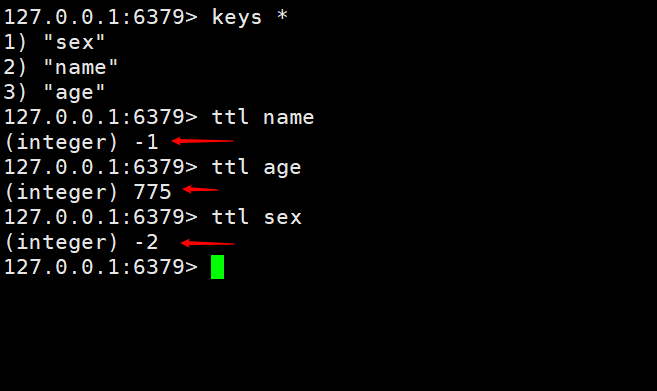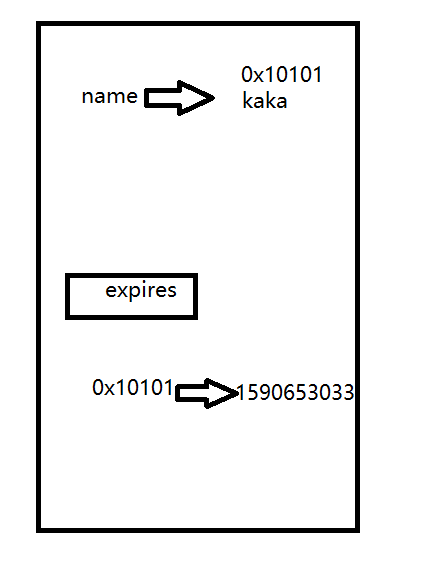Redis deletion policy and eviction policy
Knowledge points of this article
Expired data concept
Data deletion strategy
Eviction algorithm
Expired data
# Let’s first look at the three key values, namely sex, name, and age.
The instructions for setting these three values are set name kaka setex age 100 24 setex sex 10 1
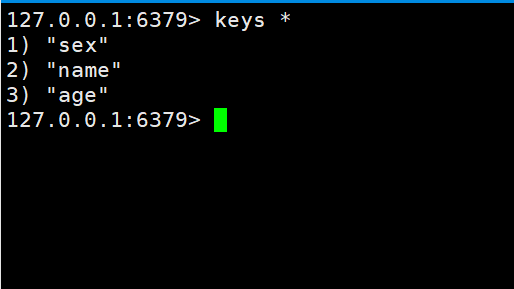
In redis we can use ttl to get the status of a certain key. Let’s use ttl to get the above information respectively. For the status of name, age, and sex
, you can see three values, which are -1 775 -2
So what is the information given by these three values!
- #-1 represents permanently valid data
- 775 This value is set on age, and the command used is
setex age 1000 24, expressed as the remaining validity time - -2 indicates expired data, or deleted data, or data that has no definition

Storage structure of expired data
- When we set a time-sensitive When the name is specified, redis stores a memory address 0x10101
- and then redis will open up another space to store the time-sensitive key
- , but the storage method is the memory address corresponding to the key and Expiration time

#The redis deletion strategy we are talking about today is the deleted data.
Scheduled deletion
Scheduled deletion is to write a timer, and then when the key time expires, the timer task will immediately delete the expired key
Advantages: You can imagine that the key will be deleted when it expires. It is definitely the most memory-friendly and saves memory.
Disadvantages: The single-threaded feature of redis is that all commands are executed in a certain order. Deleting the key value when it expires will put more pressure on the CPU, which will directly affect the redis server response time and IO
Scheduled deletion means using time in exchange for space
After the scheduled deletion is completed, the data corresponding to the key value will be deleted, and the expired memory area will also be deleted directly.
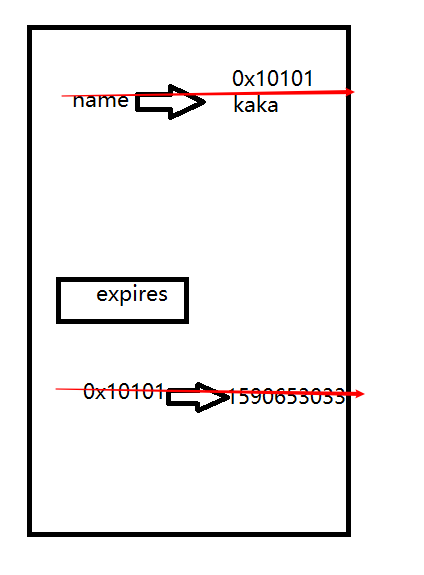
Lazy deletion
Come and see This picture will not be deleted directly after the key value expires. When will it be deleted? Continue reading
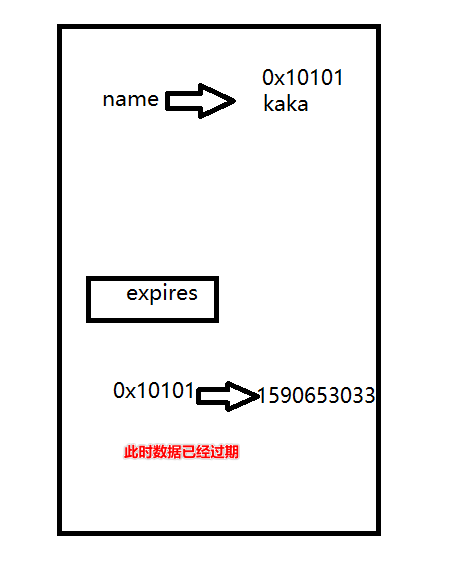
When we use lazy deletion, the data will not be automatically deleted when it expires, so his deletion method is , the next time the key value is obtained, a judgment will be made to determine whether the key has expired. If it has expired, it will be deleted.
That is to say, when get name is executed again, a function will be executed expirelfNeeded() This function is to determine whether the key has expired. Return nil when expired, and then delete it from the memory
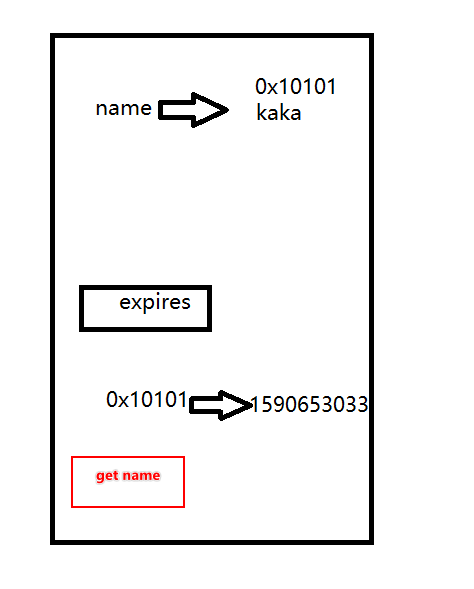
In other words, this method is to trade space for time
Delete regularly
We mentioned two deletion methods above, one is scheduled deletion and the other is lazy deletion. One is to trade space for time. One is to trade time for space. Both options are relatively extreme approaches. Then let's take a look at the implementation plan for regular deletion.
Let’s first take a look at the storage space of redis. There are 16 by default. There is a configuration parameter database in redis.conf that is controlled by this parameter. Each database has its own expiration partition, which stores data address and data expiration time.
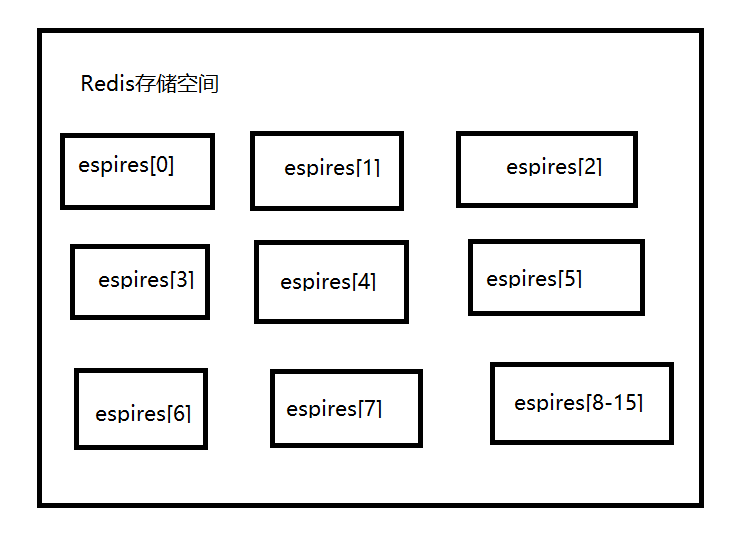
Implementation method
redis is starting When, the value of hz under the server will be read, and the default is 10. This value can be viewed directly in the terminal using info server
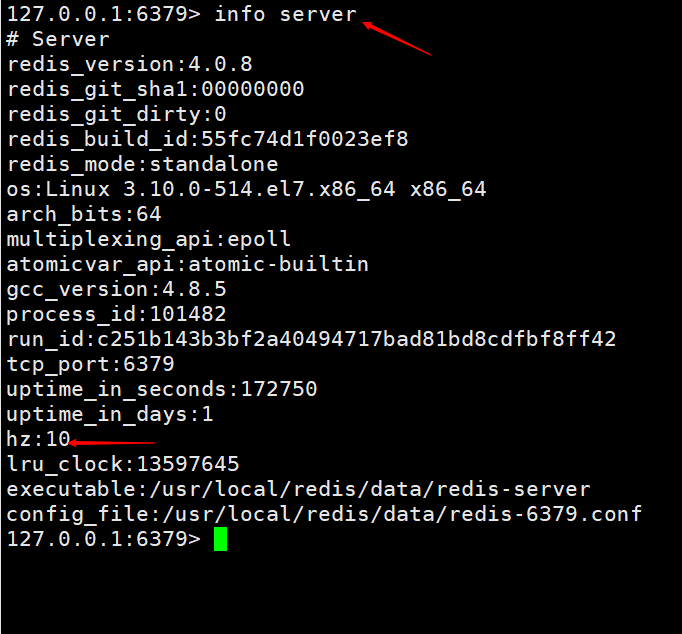
Then the server will be executed hz times per second for serverCron() polling
Continue Use databasesCron to access the information of the 16 redis libraries one by one.
During the access, activeExpireCycel will be executed to detect each expires[*] one by one. The time of each execution is 250ms / server hz this parameter
When testing each expirs[*] one by one, ACTIVE_EXPIRE_CYCLE_SLOW_TIME_PERC will be randomly picked out for testing
- If the key times out, delete the key directly
- The number of keys deleted in one round>ACTIVE_EXPIRE_CYCLE_SLOW_TIME_PERC*25% continues to cycle the process
- If in one round The number of deleted keys <=ACTIVE_EXPIRE_CYCLE_SLOW_TIME_PERC25%, check the next expires[]
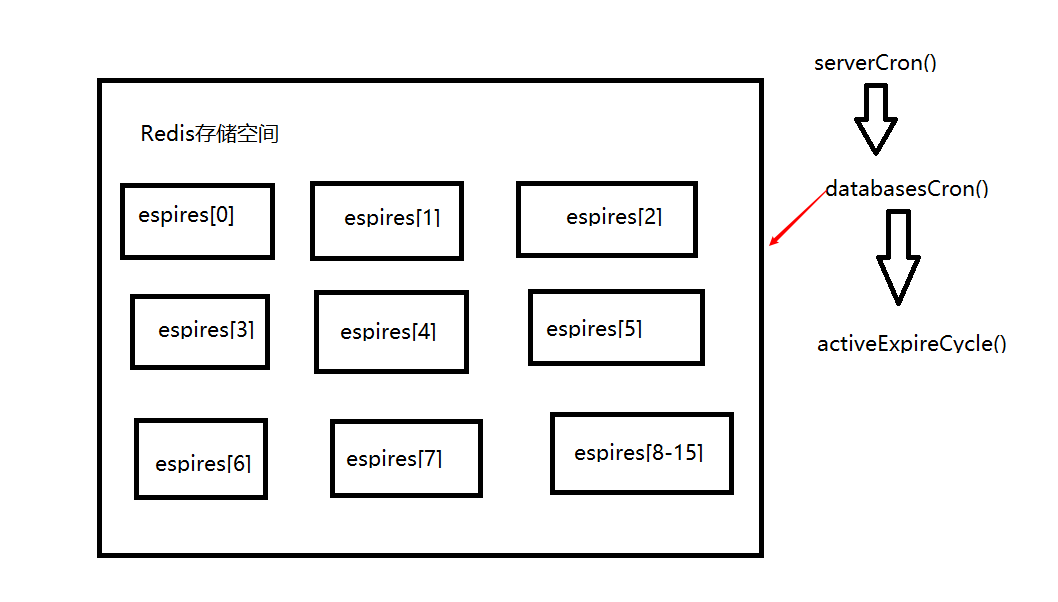
Feature 1: No high peaks in CPU usage, custom setting of detection frequency
Feature 2: The memory pressure will not be very high, and the memory occupied for a long time will be continuously cleaned up
Eviction algorithm
We mentioned three deletion strategies above, but these three strategies are only effective relative to the key with a validity period set.
Now that our redis uses insufficient memory, we will use the eviction policy to ensure the normal use of redis.
Redis will call freeMemorylfNeeded() to check whether the memory is sufficient before each command is executed. When it is insufficient, some keys will be cleared. This data clearing strategy is called Eviction policy.
#The parameter of the maximum usable memory of redis is: maxmemory. The default is 0. It refers to the proportion of physical memory occupied. Generally, it is set to 50%.
Select the number of keys to be deleted each time: maxmemory-samples
Deletion policy: maxmemory-policy
Let’s focus on the deletion strategy
- Detect volatile data (that is, we set the validity period, but it has not expired yet The data is expires[*] above)
- volatile-lru: Select the recently used data
- volatile-lfu: Select the number of recent uses Minimal data
- volatile-ttl: Select the data to be eliminated
- volatile-random: Randomly select
Look at a picture next
- 9s is the current time
- The key with the longest distance from 9s is age
- The key with the least usage is gender
- If according to volatile- lru will delete age
- If you follow volatile-lfu, gender will be deleted

- Detect all data
- allkeys-lru: Select the data that has been used least recently
- allkeys-lfu: Select the data that has been used the least recently
- allkeys-random: Randomly use the entire database Delete
- Give up data eviction
- no-enviction: The data will not be deleted until the memory is used up. , causing an oom error.
Summary
The above is the deletion strategy and eviction strategy of redis for data.
One thing to note here is that in the eviction policy, volatile data refers to the key with an expiration time set, and is not a permanent value.
The whole database refers to all values, with expiration time and permanent data set.
The above is the detailed content of Redis deletion policy and eviction policy. For more information, please follow other related articles on the PHP Chinese website!

Hot AI Tools

Undresser.AI Undress
AI-powered app for creating realistic nude photos

AI Clothes Remover
Online AI tool for removing clothes from photos.

Undress AI Tool
Undress images for free

Clothoff.io
AI clothes remover

Video Face Swap
Swap faces in any video effortlessly with our completely free AI face swap tool!

Hot Article

Hot Tools

Notepad++7.3.1
Easy-to-use and free code editor

SublimeText3 Chinese version
Chinese version, very easy to use

Zend Studio 13.0.1
Powerful PHP integrated development environment

Dreamweaver CS6
Visual web development tools

SublimeText3 Mac version
God-level code editing software (SublimeText3)

Hot Topics
 1673
1673
 14
14
 1428
1428
 52
52
 1333
1333
 25
25
 1278
1278
 29
29
 1257
1257
 24
24
 How to build the redis cluster mode
Apr 10, 2025 pm 10:15 PM
How to build the redis cluster mode
Apr 10, 2025 pm 10:15 PM
Redis cluster mode deploys Redis instances to multiple servers through sharding, improving scalability and availability. The construction steps are as follows: Create odd Redis instances with different ports; Create 3 sentinel instances, monitor Redis instances and failover; configure sentinel configuration files, add monitoring Redis instance information and failover settings; configure Redis instance configuration files, enable cluster mode and specify the cluster information file path; create nodes.conf file, containing information of each Redis instance; start the cluster, execute the create command to create a cluster and specify the number of replicas; log in to the cluster to execute the CLUSTER INFO command to verify the cluster status; make
 How to clear redis data
Apr 10, 2025 pm 10:06 PM
How to clear redis data
Apr 10, 2025 pm 10:06 PM
How to clear Redis data: Use the FLUSHALL command to clear all key values. Use the FLUSHDB command to clear the key value of the currently selected database. Use SELECT to switch databases, and then use FLUSHDB to clear multiple databases. Use the DEL command to delete a specific key. Use the redis-cli tool to clear the data.
 How to read redis queue
Apr 10, 2025 pm 10:12 PM
How to read redis queue
Apr 10, 2025 pm 10:12 PM
To read a queue from Redis, you need to get the queue name, read the elements using the LPOP command, and process the empty queue. The specific steps are as follows: Get the queue name: name it with the prefix of "queue:" such as "queue:my-queue". Use the LPOP command: Eject the element from the head of the queue and return its value, such as LPOP queue:my-queue. Processing empty queues: If the queue is empty, LPOP returns nil, and you can check whether the queue exists before reading the element.
 How to configure Lua script execution time in centos redis
Apr 14, 2025 pm 02:12 PM
How to configure Lua script execution time in centos redis
Apr 14, 2025 pm 02:12 PM
On CentOS systems, you can limit the execution time of Lua scripts by modifying Redis configuration files or using Redis commands to prevent malicious scripts from consuming too much resources. Method 1: Modify the Redis configuration file and locate the Redis configuration file: The Redis configuration file is usually located in /etc/redis/redis.conf. Edit configuration file: Open the configuration file using a text editor (such as vi or nano): sudovi/etc/redis/redis.conf Set the Lua script execution time limit: Add or modify the following lines in the configuration file to set the maximum execution time of the Lua script (unit: milliseconds)
 How to use the redis command line
Apr 10, 2025 pm 10:18 PM
How to use the redis command line
Apr 10, 2025 pm 10:18 PM
Use the Redis command line tool (redis-cli) to manage and operate Redis through the following steps: Connect to the server, specify the address and port. Send commands to the server using the command name and parameters. Use the HELP command to view help information for a specific command. Use the QUIT command to exit the command line tool.
 How to implement redis counter
Apr 10, 2025 pm 10:21 PM
How to implement redis counter
Apr 10, 2025 pm 10:21 PM
Redis counter is a mechanism that uses Redis key-value pair storage to implement counting operations, including the following steps: creating counter keys, increasing counts, decreasing counts, resetting counts, and obtaining counts. The advantages of Redis counters include fast speed, high concurrency, durability and simplicity and ease of use. It can be used in scenarios such as user access counting, real-time metric tracking, game scores and rankings, and order processing counting.
 How to set the redis expiration policy
Apr 10, 2025 pm 10:03 PM
How to set the redis expiration policy
Apr 10, 2025 pm 10:03 PM
There are two types of Redis data expiration strategies: periodic deletion: periodic scan to delete the expired key, which can be set through expired-time-cap-remove-count and expired-time-cap-remove-delay parameters. Lazy Deletion: Check for deletion expired keys only when keys are read or written. They can be set through lazyfree-lazy-eviction, lazyfree-lazy-expire, lazyfree-lazy-user-del parameters.
 How to optimize the performance of debian readdir
Apr 13, 2025 am 08:48 AM
How to optimize the performance of debian readdir
Apr 13, 2025 am 08:48 AM
In Debian systems, readdir system calls are used to read directory contents. If its performance is not good, try the following optimization strategy: Simplify the number of directory files: Split large directories into multiple small directories as much as possible, reducing the number of items processed per readdir call. Enable directory content caching: build a cache mechanism, update the cache regularly or when directory content changes, and reduce frequent calls to readdir. Memory caches (such as Memcached or Redis) or local caches (such as files or databases) can be considered. Adopt efficient data structure: If you implement directory traversal by yourself, select more efficient data structures (such as hash tables instead of linear search) to store and access directory information




